.. because they were made at home as well as by professionals. Boys as well as girls wore them as soon as they were able to walk. (Extant: girls’ 18th century stays; low class (left) and high class (right)
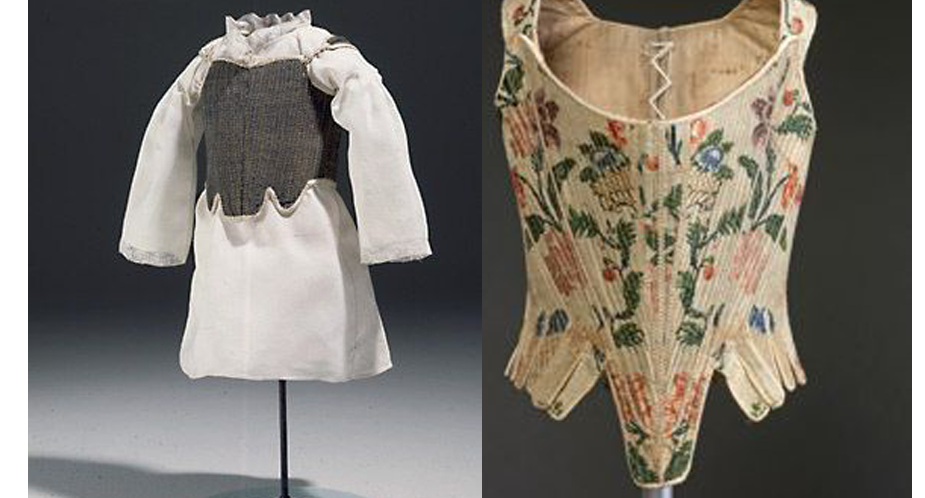

.. because they were made at home as well as by professionals. Boys as well as girls wore them as soon as they were able to walk. (Extant: girls’ 18th century stays; low class (left) and high class (right)
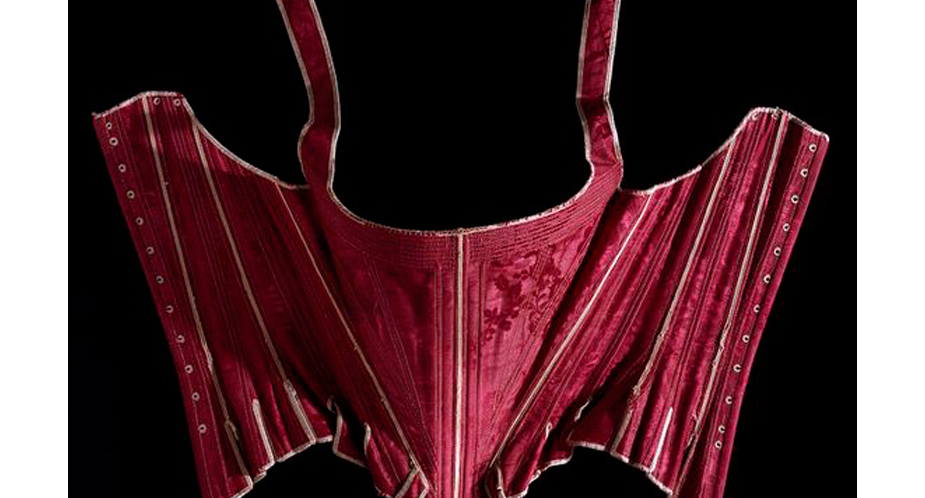
was less rigid than in France, and the heavily boned bodice was reserved for coronations, Royal weddings, and high formal affairs. These, being well ornamented, were most likely worn on the outside of a dress. (Extant: featured and below, 1780’s silk damask English stays)
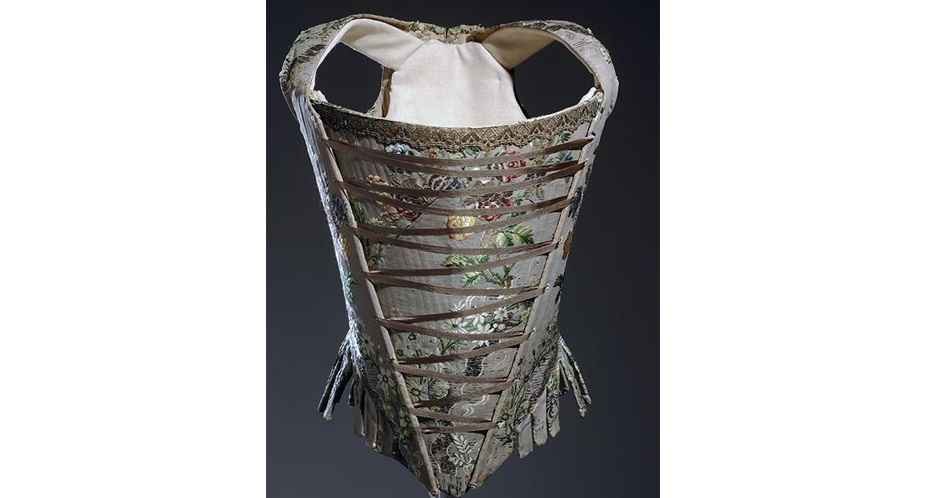
… or le corps de cour” was a boned bodice of French Court Dress. When the shoulder and neck were exposed starting in 1680 with the rounded stays, women realized it was a great way to show off jewelry, laces, and other fancy work. This bodice was worn with straps …
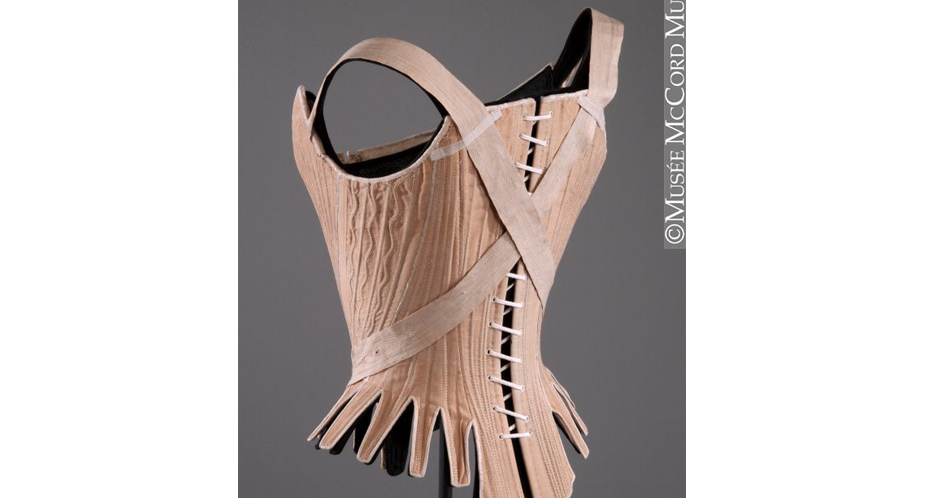
… short, while the back remained long. (Extant: approximate 1785 stays with back longer than the front)
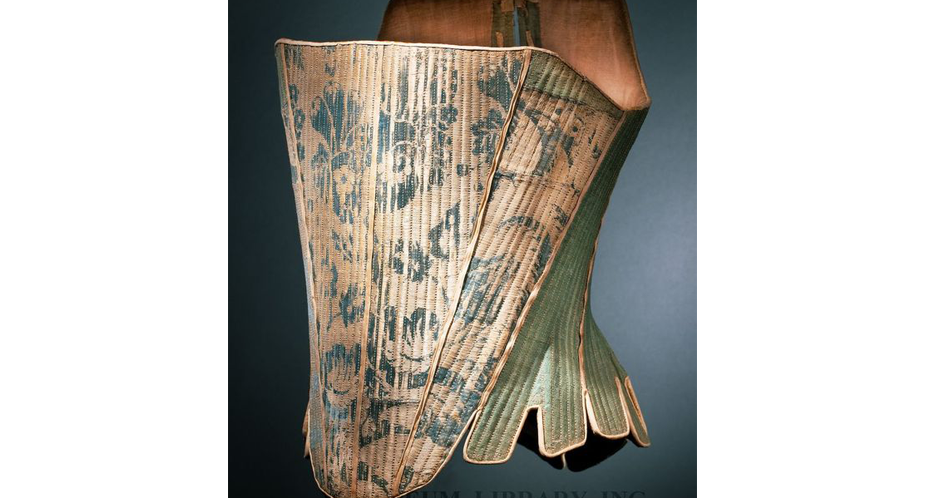
… it was the direction of the bones and supporting inside bones that were important, so less seaming was used, and more boning. These later stays were often covered in plain silk or cotton and were very stiff but subtle in form. They were shaped using a steam iron. (Extant: …

…the French. French stays had more subtle shaping. In the first half of the century a long, loose robe was worn open in France to show off the decorative stays beneath. (Extant: 1770 French robes a la francaise)

…were decorated and often worn with the dress front open to show them off. Beautiful fabrics such as silk or brocade with embroidery were used as decorative features. (Photo: 1740’s decorative stomachers)
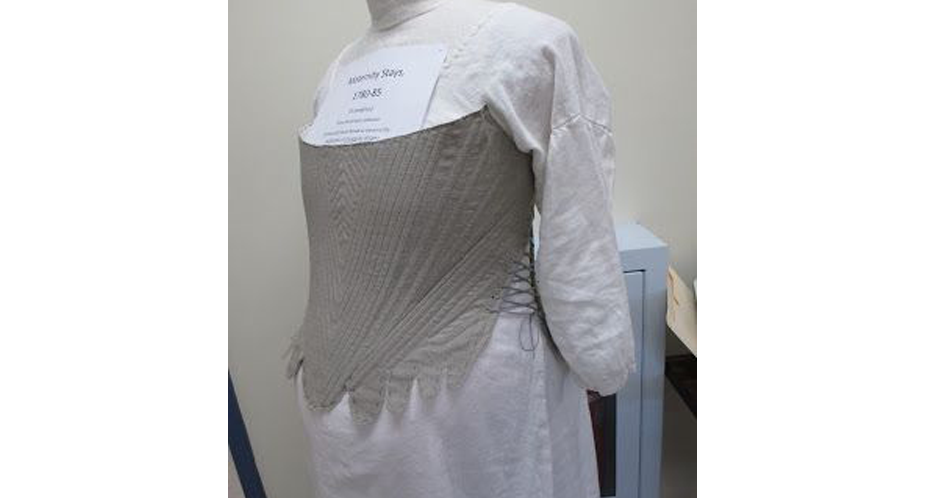
…there was variation in the methods of lacing front and back. Side lacing was used for pregnancy. When laced in front, the opening was wider on top and tapered to the bottom. (Featured: Modern reproduction side lacing maternity stays. Below: 1765 extant nursing stays)
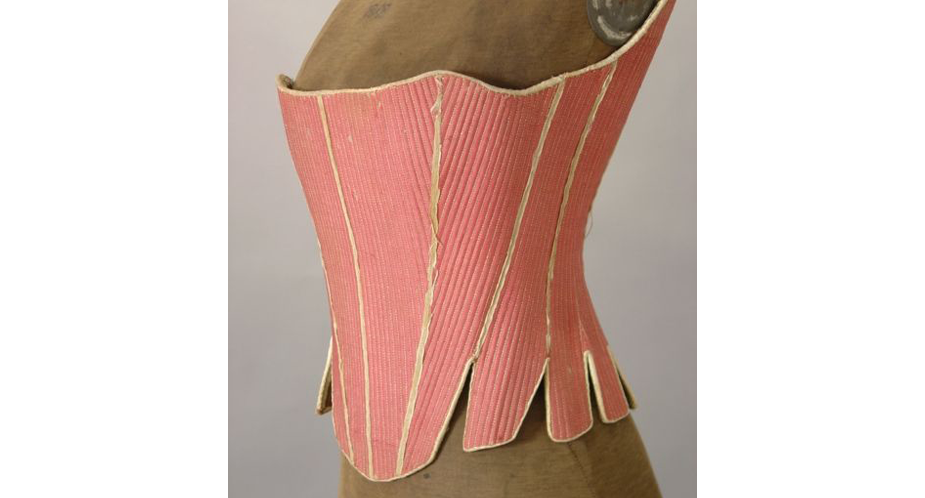
…by hand, and bones were often laid one next to the other within 1/8″ in rows, demanding quite the craftsmanship as well as hand and arm strength. The making of stays was reserved for men because of the strength required, and also for political reasons due to tailor’s guilds. (Extant …
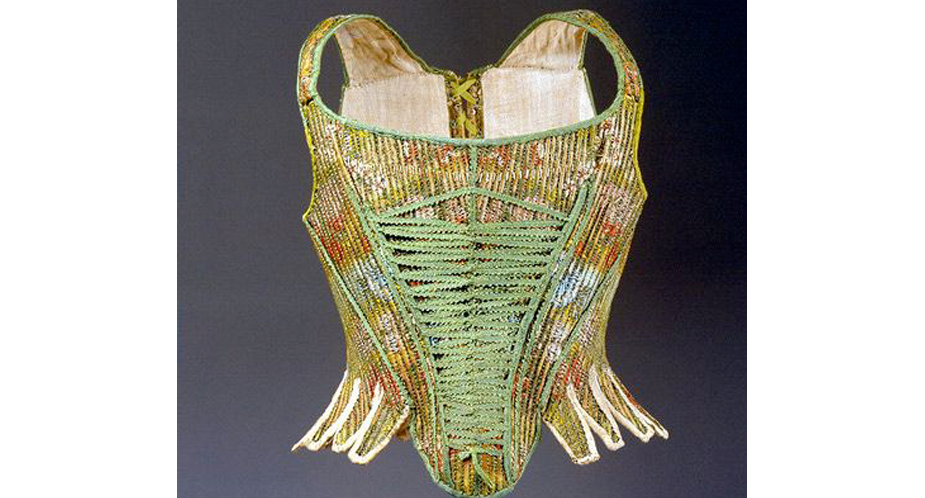
…either half-boned or fully boned, and never without boning. (Extant stays: In the 1760’s boning was intricate and specific even in decorative stays like these from France)